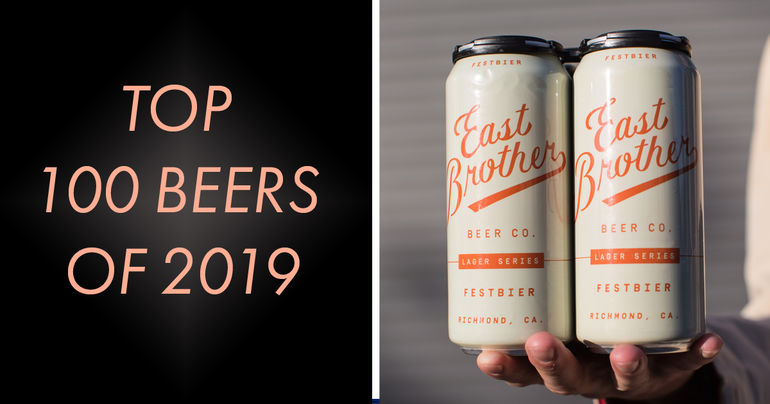Start 14-Day Trial Subscription
*No credit card required

Top 100 Beers of 2019
#11

96
by Richard Wong
Juicy Harvest
Upland Brewing Co.

Head of Brewing Operations and COO Pete Batule Talks Juicy Harvest
Who was responsible for this beer’s recipe?
We have been making an annual wet-hopped Harvest Ale for many years at Upland. While in previous years it was a traditional American-style Pale Ale, this year Patrick Lynch, our lead brewer, decided to adjust the recipe to achieve a hazy/juicy-style IPA.
What sets this beer apart from other examples within the style?
There are few examples of this style that use locally sourced wet hops to make a juicy/hazy-style IPA. Our team heads up to the south side of Indianapolis to help harvest the whole cone hops, and then we immediately drive the hops down to Bloomington to use at the brewery. The nuanced flavors we find from wet hops are very difficult to achieve with traditional pelletized hops.
What makes this beer truly world-class?
Well-balanced hop aroma, bitterness and malt character. The creaminess and carbonation level are also dialed in to give it the perfect finish.
What is your favorite aspect of this beer (flavor, aroma, mouthfeel, etc.)?
The tropical aroma along with the creaminess are my two favorite elements of the beer. It is also very rewarding to work directly with local hop farmers. We can tour the fields throughout the growing season and help partake in the actual harvest itself.
How popular is this beer among your faithful fans?
Our Harvest Ale is a recipe we’ve been making for many years and everyone looks forward to how the beer will evolve over time. Each year we experiment with new hops or processes to deliver a remarkable drinking experience.
Judge’s Second Opinion
Upland Brewing Company’s Juicy Harvest IPA is a wonderful beer made via the wet hop process. The hops used in this beer are from the Indiana area, which is somewhat surprising, considering it is not known for its hop production. Harvesting of hops takes place from late August all the way to September. It is equivalent to the harvesting of grapes during wine production.
Most hops are processed as dry (hops that are dried in the kiln and presented in pellets and/or whole form). Fresh hops (wet hops) were used in the brewing process of this beer instead of dry hops. Wet hops are highly perishable and must be used within twenty-four hours of harvesting, because they expire extremely quickly. It is further challenging to use fresh hops because they are less concentrated, and so it takes more of them to achieve the same flavors as their dry counterpart. Also, fresh hops impart a grassy or green flavor rather than the heavy bitterness that dry hops provide – a flavor more typically associated with modern IPAs.
Clearly, this hop farm was in close proximity to Upland Brewing Co., and the beer that was produced via that fascinating brewing process was a delightfully hazy and fresh wet hop IPA. It poured a beautiful light yellow, milky hue and featured a nice grassy aroma and well-balanced flavors of malt sweetness and bitterness. I got hints of tropical fruit (pineapple), and it’s easy to see why it is labeled as “juicy.” The bitterness was not harsh like it is with many IPAs; instead it was rather smooth from start to finish, which is likely is due to the wet-hopping process in which bitterness is muted somewhat. This is a deceivingly drinkable beer, as well as a world-class IPA with some of the freshest hops around. - Richard Wong



